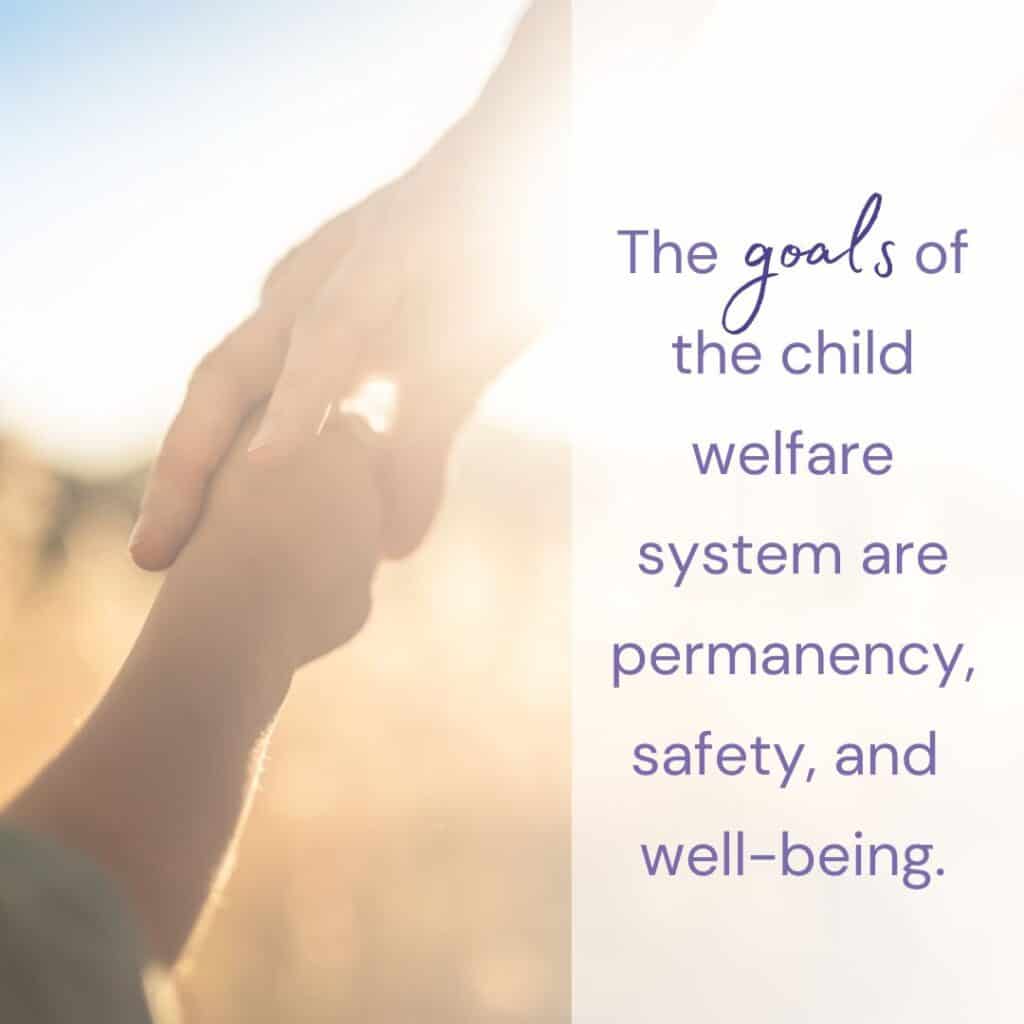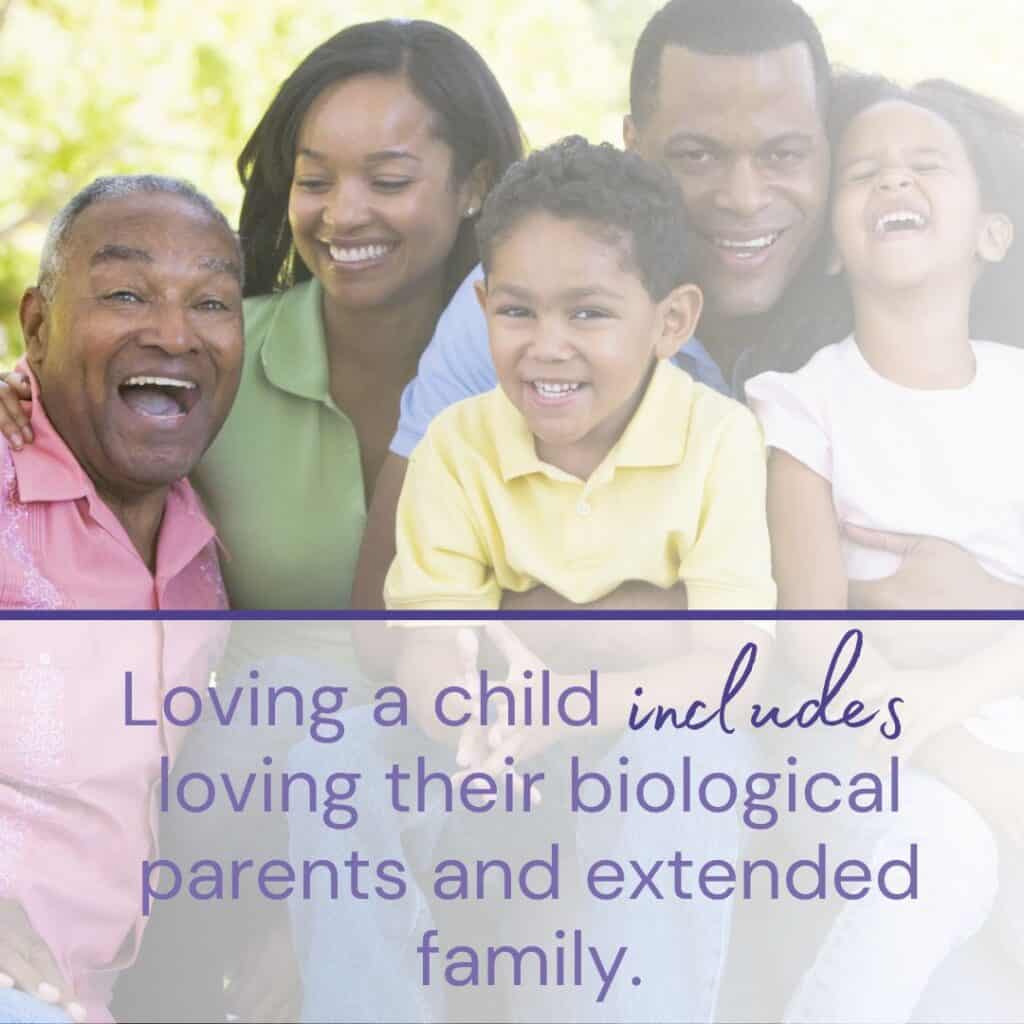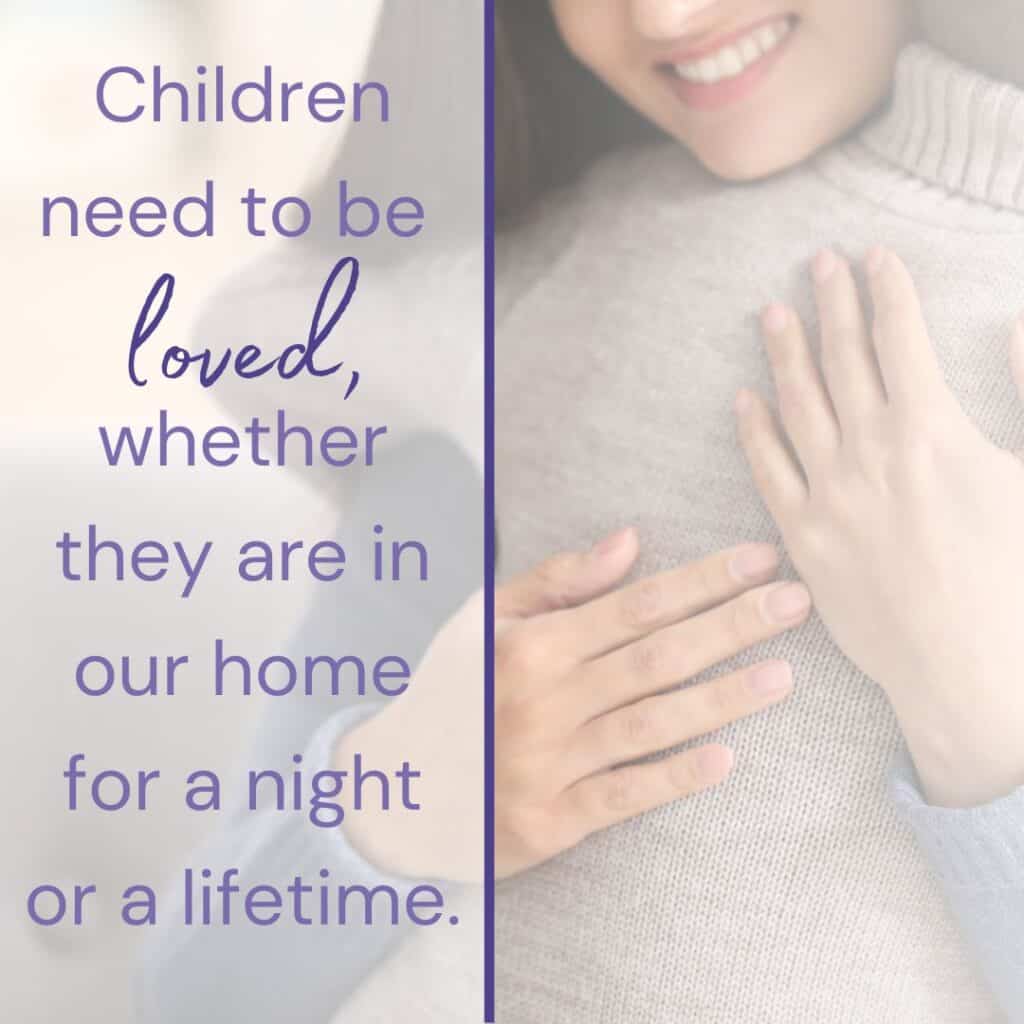We fell in love with “L” right away. Placed with us at 17 days old, he had the sweetest disposition and the biggest brown eyes. Though his biological mother was struggling, the dependency court gave her a case plan with the goal of family reunification.
If you’re even somewhat familiar with the foster care system, it’s quite likely you’ve heard the term “family reunification” several times. You may have experience with, and/or opinions on, reunification, or maybe you wonder what it means.
Some people and agencies have a narrow view of reunification, saying it refers to when a child in foster care is returned to the parents/caretakers from whom they were removed (for simplicity’s sake, we will use the term “parents” instead of “parent,” though many children are indeed removed from single-parent homes). Some include those cases in which the child is returned to any members of their family of origin.

There are those in child welfare circles who would say reunification is the goal of the foster care system. Though I won’t discuss that in detail here, I will say that that claim is a myth. The goals of the child welfare system are permanency, safety, and well-being. Reunification is one way those goals can be met. However, it isn’t the only way, and it isn’t the overarching goal itself.
However, reunification is the most common case plan goal at the outset of individual child welfare cases. When a child enters foster care, their parents are (with some exceptions) given a case plan outlining certain conditions they must meet to have their child returned to them. Those conditions might include such things as completing parenting or anger management classes, securing a stable job, or testing negative for drugs over a period of time.
The purpose of the case plan is to help the parents address the issues that led to their child’s removal. The successful completion of the case plan indicates to the judge that the parents can and will provide a safe, stable home environment for the child upon their return. While parents work their case plans, children often remain in foster homes but are often placed with relatives once their homes are approved.
L’s maternal grandparents lived in another state. They are a sweet, loving couple who asked for custody of their grandson at his birth. Had they lived near us, in Los Angeles County, he would likely have been placed with them instead of us. Since they lived out of state, however, his placement was subject to completion of ICPC (Interstate Compact on the Placement of Children) requirements, which can be quite time-consuming. This meant he would remain in our home for an extended period, during which he (and we) would become more attached. Still, reunification was the goal, and the plan was to place him with his grandparents while his mother worked her case plan.
If the parents are able to successfully work their case plan, their child is most often returned to them after a future court date. If the parents do not successfully work their case plan in a timely manner, their parental rights are often terminated and another safe, permanent option is sought for the child. That may mean adoption (often by the current foster parents) or permanent placement with members of the child’s extended biological family, or some other arrangement.
As foster parents, we are expected to support the case plan. Though we may fall in love with a child and find ourselves wanting to give them a loving, permanent home, we mustn’t let our own wishes get in the way.
In supporting the case plan of reunification, however, we need to recognize that it is not our job to reunify the child. The parents must show the judge that they can provide their children with a safe, permanent home. Once the child is returned, the parents will need to parent their children well, hopefully with a strong support system (as we ALL need) in place. They have the opportunity during the reunification process to gain the tools necessary to do so. We can encourage and pray for them, but we cannot do it for them.
We also need to report any red flags we might see. If we see behaviors or signs that reunification may not be in the child’s best interests, we must report them to the caseworker. The caseworker depends on foster parents to be their eyes and ears. Still, we must be objective in what we report – bad and good – and we mustn’t let our own emotions get in the way of our objectivity.
As Christians, we are called to love our neighbors. Our neighbors include not only the children God places in our home but their biological parents and extended family as well. When parents love their children and make efforts to reunify, we can and should encourage them and pray for them.

As Christians, we also need to remember that we serve a God who wants to reconcile people to Himself and restore people into the right relationship with Him and others. As His children, again, we can encourage and pray for the restoration of families if it is in the child’s best interests.
Remembering these simple, biblical truths can hopefully help us seek the good of both the child and their biological family, and enable us to look at family reunification, when done safely and in the child’s best interests, as something that heaven, and we, can rejoice over.
It can be very painful for a foster family when a child reunifies. Many people say we need to guard our hearts with children placed in our homes, but I disagree. Children need to be loved, whether they are in our home for a night or a lifetime. When I see foster parents crying over a reunified child, I tell them that it means they loved the child well.
Over time, through video chats, we built a good relationship with L’s grandparents. Eventually, they completed the ICPC when he was seven months old. They, and his mother, traveled to Los Angeles County and stayed for several days (in the home of some of our church friends) so they could get to know him, and he could get to know them. The day they left was an emotional one.
I will never forget seeing his biological mother hugging my two youngest daughters. All three of them were crying as we said goodbye to him.

When a child reunifies, it doesn’t necessarily mean you have to say goodbye for good, though. If you’ve developed a strong relationship with the child’s biological family, and they believe it is in the child’s best interests, you may remain a part of their lives and support them as the child grows up.
L’s grandparents and mother appreciated the time we cared for and loved him. His mother ultimately didn’t reunify with him, and he has remained with his grandparents. We’ve stayed in touch over the years through texts and social media. I visited him in his grandparents’ home a few years ago. Though his departure had been painful, it was such a joy to see him thriving in their home. It is a blessing to know that God had allowed us to be a part of His plan to bring restoration to his biological family.
The post What is Family Reunification? appeared first on Focus on the Family.
Continue reading...
What is Family Reunification?
If you’re even somewhat familiar with the foster care system, it’s quite likely you’ve heard the term “family reunification” several times. You may have experience with, and/or opinions on, reunification, or maybe you wonder what it means.
Some people and agencies have a narrow view of reunification, saying it refers to when a child in foster care is returned to the parents/caretakers from whom they were removed (for simplicity’s sake, we will use the term “parents” instead of “parent,” though many children are indeed removed from single-parent homes). Some include those cases in which the child is returned to any members of their family of origin.

There are those in child welfare circles who would say reunification is the goal of the foster care system. Though I won’t discuss that in detail here, I will say that that claim is a myth. The goals of the child welfare system are permanency, safety, and well-being. Reunification is one way those goals can be met. However, it isn’t the only way, and it isn’t the overarching goal itself.
However, reunification is the most common case plan goal at the outset of individual child welfare cases. When a child enters foster care, their parents are (with some exceptions) given a case plan outlining certain conditions they must meet to have their child returned to them. Those conditions might include such things as completing parenting or anger management classes, securing a stable job, or testing negative for drugs over a period of time.
The Purpose of the Case Plan in Family Reunification
The purpose of the case plan is to help the parents address the issues that led to their child’s removal. The successful completion of the case plan indicates to the judge that the parents can and will provide a safe, stable home environment for the child upon their return. While parents work their case plans, children often remain in foster homes but are often placed with relatives once their homes are approved.
L’s maternal grandparents lived in another state. They are a sweet, loving couple who asked for custody of their grandson at his birth. Had they lived near us, in Los Angeles County, he would likely have been placed with them instead of us. Since they lived out of state, however, his placement was subject to completion of ICPC (Interstate Compact on the Placement of Children) requirements, which can be quite time-consuming. This meant he would remain in our home for an extended period, during which he (and we) would become more attached. Still, reunification was the goal, and the plan was to place him with his grandparents while his mother worked her case plan.
If the parents are able to successfully work their case plan, their child is most often returned to them after a future court date. If the parents do not successfully work their case plan in a timely manner, their parental rights are often terminated and another safe, permanent option is sought for the child. That may mean adoption (often by the current foster parents) or permanent placement with members of the child’s extended biological family, or some other arrangement.
How Foster Parents Support the Case Plan
As foster parents, we are expected to support the case plan. Though we may fall in love with a child and find ourselves wanting to give them a loving, permanent home, we mustn’t let our own wishes get in the way.
In supporting the case plan of reunification, however, we need to recognize that it is not our job to reunify the child. The parents must show the judge that they can provide their children with a safe, permanent home. Once the child is returned, the parents will need to parent their children well, hopefully with a strong support system (as we ALL need) in place. They have the opportunity during the reunification process to gain the tools necessary to do so. We can encourage and pray for them, but we cannot do it for them.
We also need to report any red flags we might see. If we see behaviors or signs that reunification may not be in the child’s best interests, we must report them to the caseworker. The caseworker depends on foster parents to be their eyes and ears. Still, we must be objective in what we report – bad and good – and we mustn’t let our own emotions get in the way of our objectivity.
A Call to Love Others
As Christians, we are called to love our neighbors. Our neighbors include not only the children God places in our home but their biological parents and extended family as well. When parents love their children and make efforts to reunify, we can and should encourage them and pray for them.

As Christians, we also need to remember that we serve a God who wants to reconcile people to Himself and restore people into the right relationship with Him and others. As His children, again, we can encourage and pray for the restoration of families if it is in the child’s best interests.
Remembering these simple, biblical truths can hopefully help us seek the good of both the child and their biological family, and enable us to look at family reunification, when done safely and in the child’s best interests, as something that heaven, and we, can rejoice over.
Family Reunification and Grief
It can be very painful for a foster family when a child reunifies. Many people say we need to guard our hearts with children placed in our homes, but I disagree. Children need to be loved, whether they are in our home for a night or a lifetime. When I see foster parents crying over a reunified child, I tell them that it means they loved the child well.
Over time, through video chats, we built a good relationship with L’s grandparents. Eventually, they completed the ICPC when he was seven months old. They, and his mother, traveled to Los Angeles County and stayed for several days (in the home of some of our church friends) so they could get to know him, and he could get to know them. The day they left was an emotional one.
I will never forget seeing his biological mother hugging my two youngest daughters. All three of them were crying as we said goodbye to him.
Continued Relationships are Possible

When a child reunifies, it doesn’t necessarily mean you have to say goodbye for good, though. If you’ve developed a strong relationship with the child’s biological family, and they believe it is in the child’s best interests, you may remain a part of their lives and support them as the child grows up.
L’s grandparents and mother appreciated the time we cared for and loved him. His mother ultimately didn’t reunify with him, and he has remained with his grandparents. We’ve stayed in touch over the years through texts and social media. I visited him in his grandparents’ home a few years ago. Though his departure had been painful, it was such a joy to see him thriving in their home. It is a blessing to know that God had allowed us to be a part of His plan to bring restoration to his biological family.
The post What is Family Reunification? appeared first on Focus on the Family.
Continue reading...





